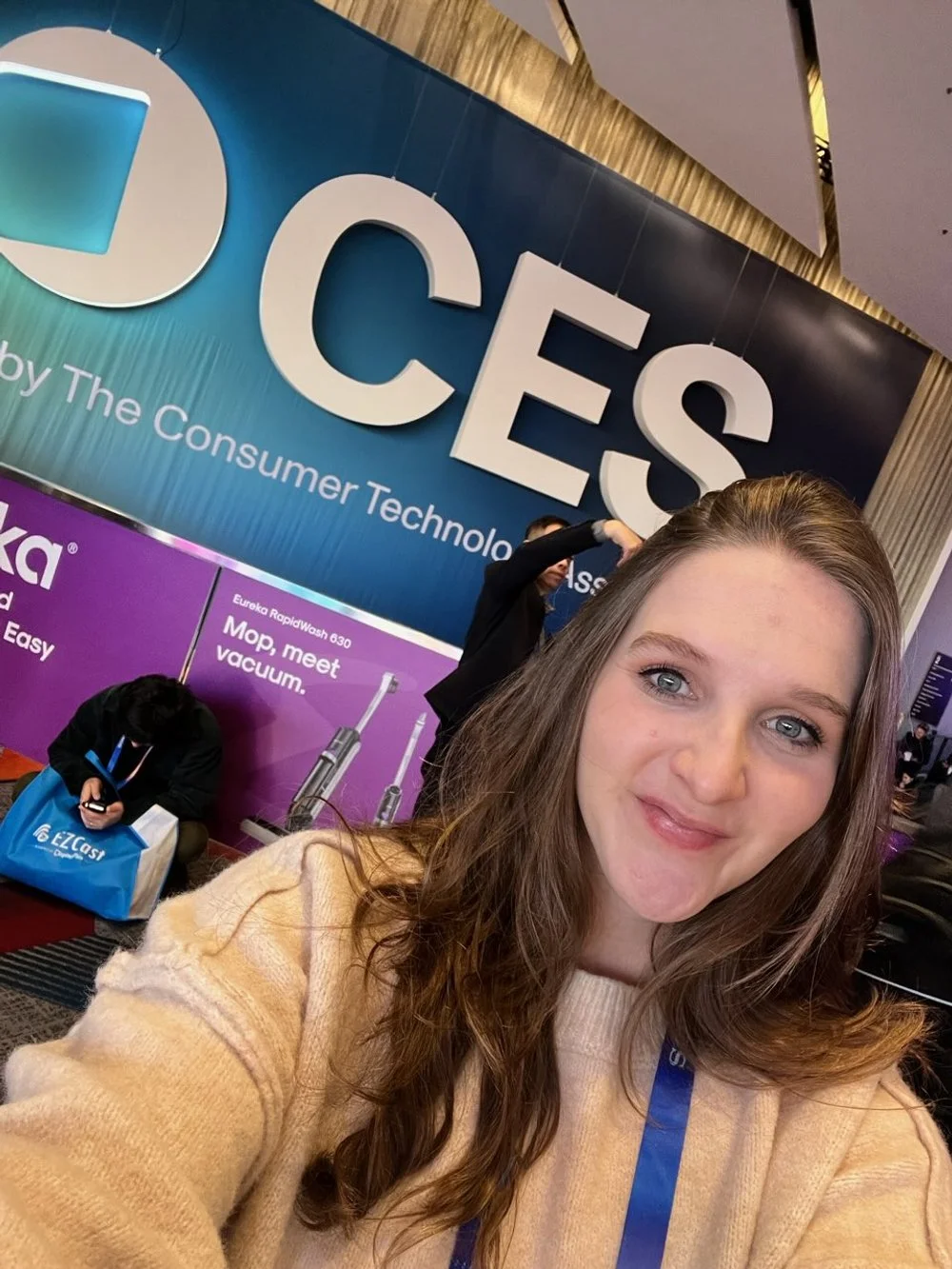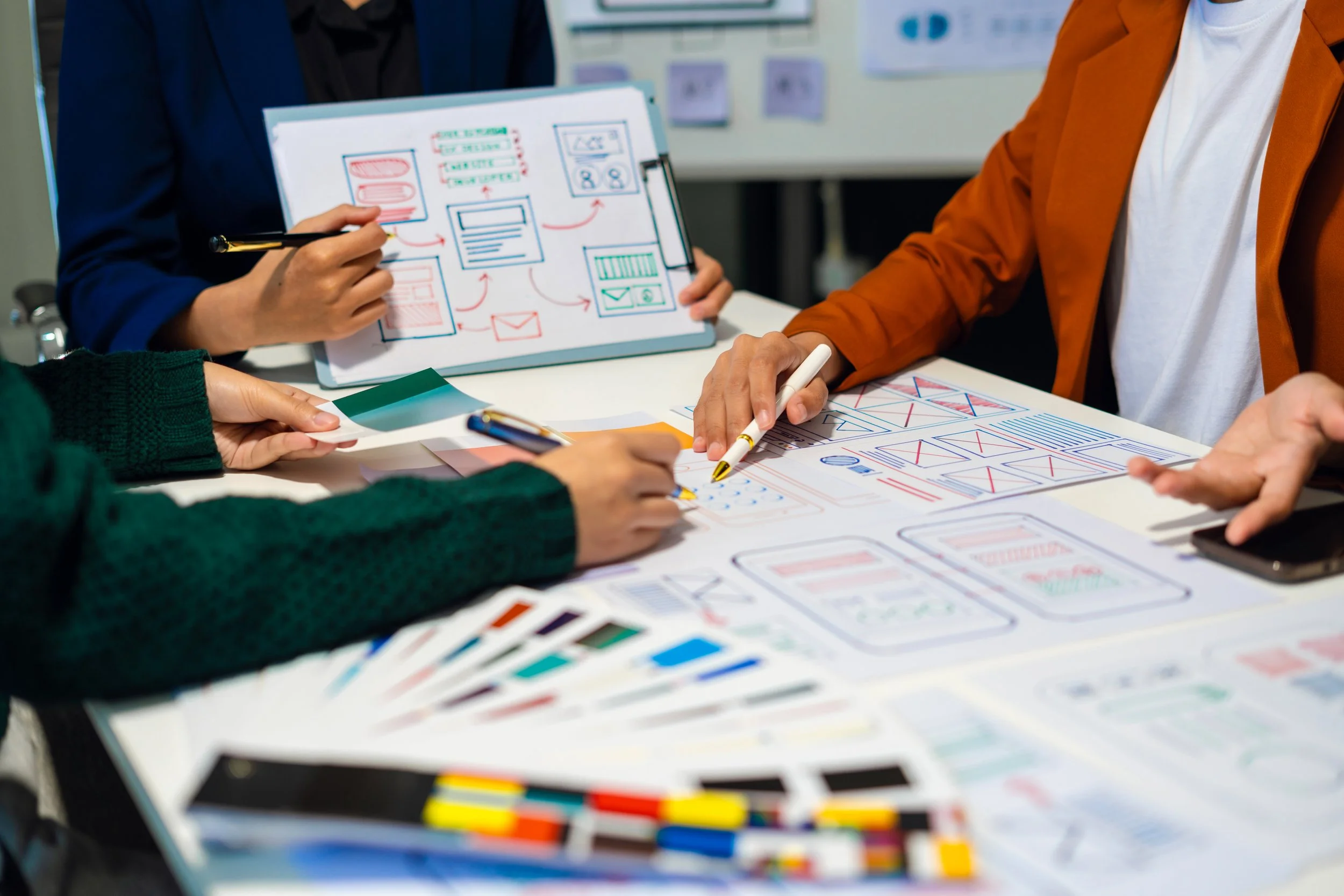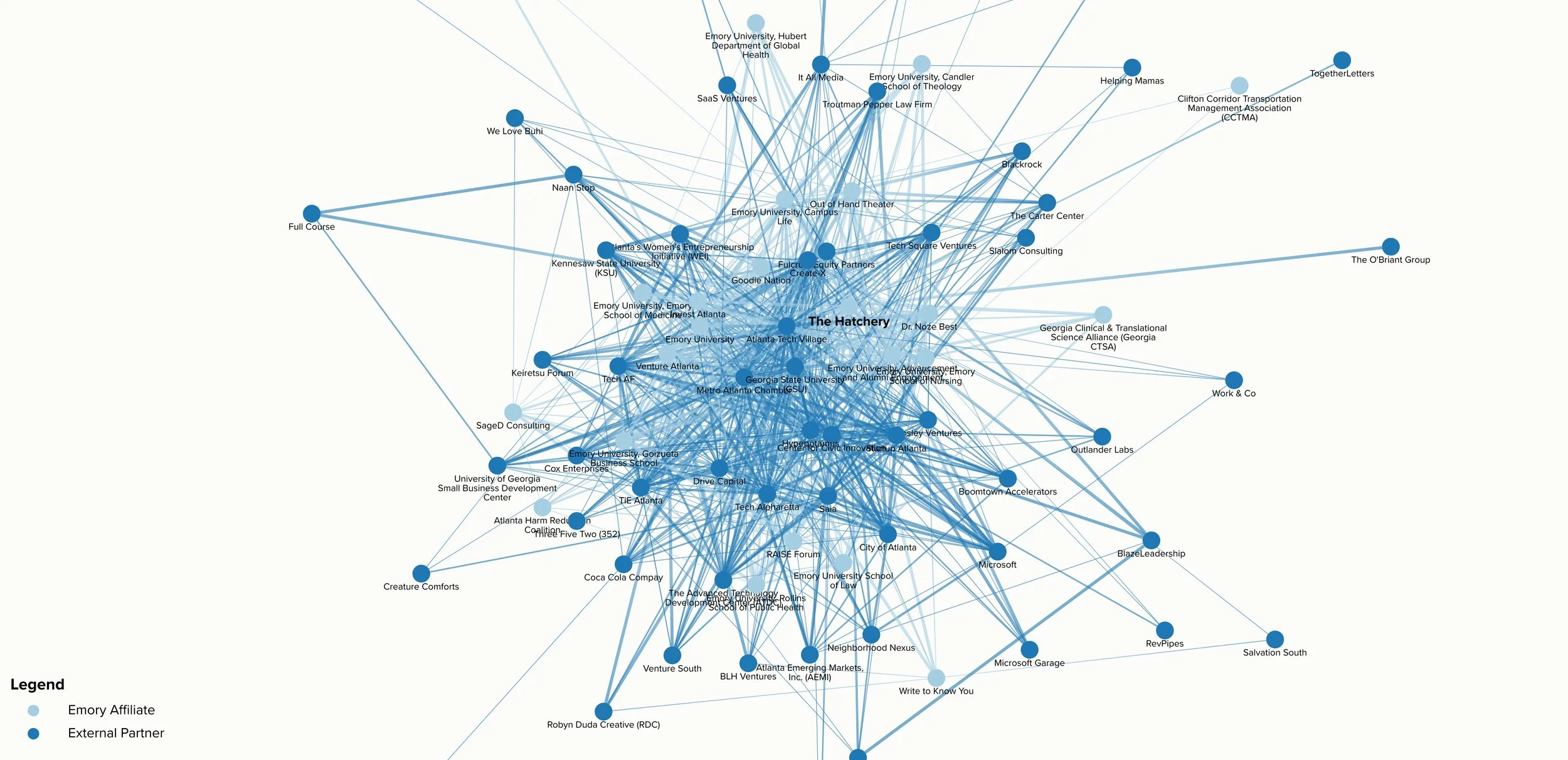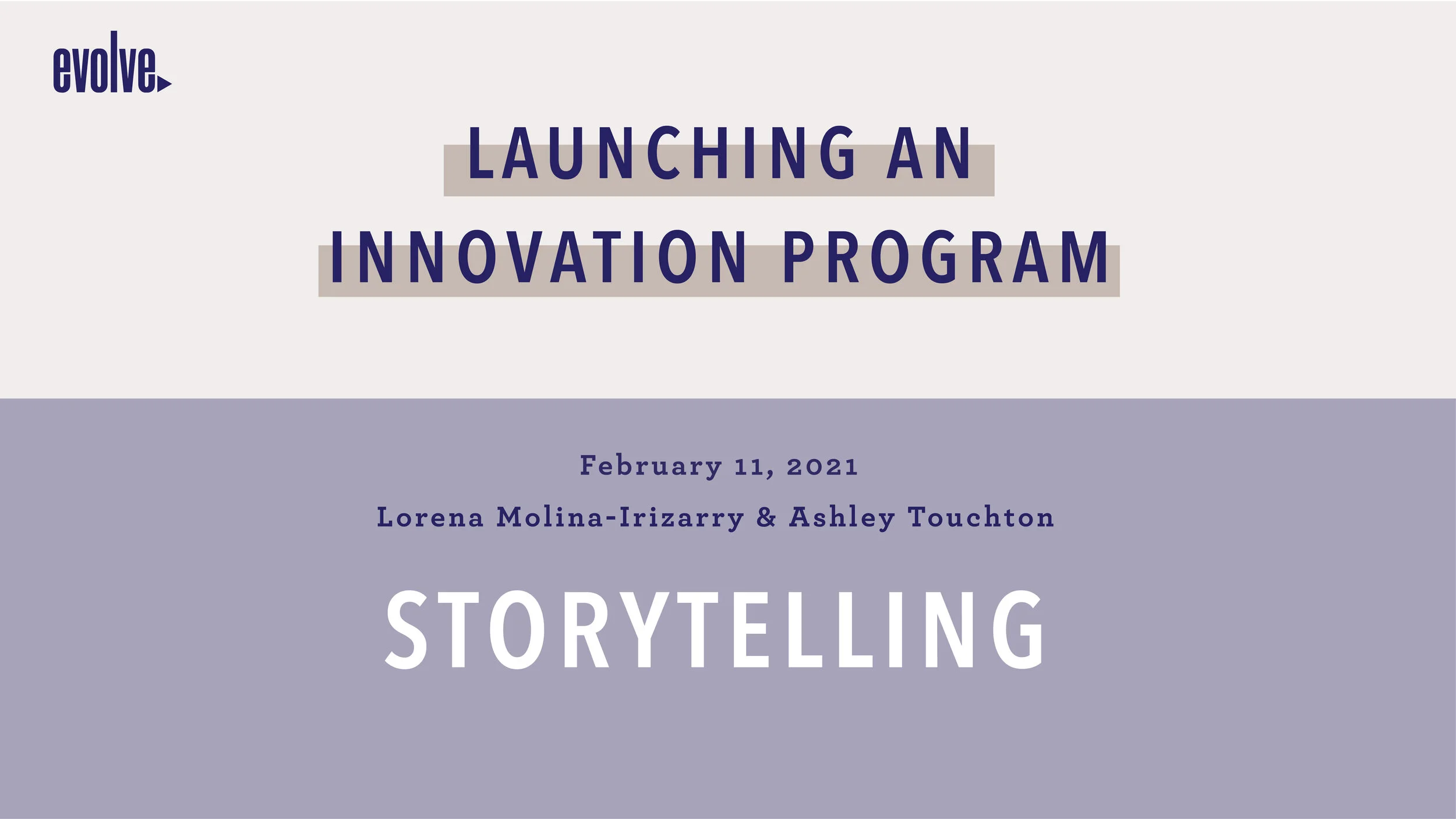While inclusivity and diverse representation are necessary in all fields, they are especially crucial when designing for change. We asked several of our OSB team members to share their thoughts on building inclusive innovation ecosystems and their potential benefits to stakeholders.
Co-Designing for Inclusive Innovation Ecosystems at GAME Change Summit 2024
Several members of the OSB team had the chance to lead an ecosystem mapping and inclusive roadmap building workshop at the 2024 GAME Change Summit, a yearly event bringing together innovators from across the Southeastern Commerce Corridor to identify unmet needs in the next-generation manufacturing and supply chain ecosystem, and co-create inclusive solutions together.
Innovator Spotlight: MTEC SmartZone
We’re excited to see our friends at MTEC SmartZone hosting their first accelerator! We recently sat down with members of the MTEC team to understand more about the U.P.’s (Upper Peninsula) innovation ecosystem, their unique position in the advanced materials and manufacturing innovation space, and their upcoming Advanced Materials and Manufacturing Program (AMMP) accelerator.
Innovator Spotlight: Macon Black Tech
As one of our Ecosystem Partners in the 2023 TOP NLC Sprint, we worked with Macon Black Tech to map the local innovation and entrepreneurship ecosystem of the Macon Metropolitan Area. In addition to mapping the ecosystem, we also wanted to leverage this project as an opportunity to understand the inclusivity of the overall ecosystem, and the barriers facing entrepreneurs and innovators in Middle Georgia.
OSB at the Census Open Innovation Summit
Michaela Bonnett from the OSB team presented our Ecosystem Dashboard tool at the Census Open Innovation Summit! Over the course of a 12-week sprint facilitated by the National League of Cities and The Opportunity Project by the US Census Open Innovation Labs (COIL), the OSB team developed the Ecosystem Dashboard tool to support local innovators in building robust, interconnected innovation networks.
The Opportunity Project (TOP) Case Study
Atlanta Regional Commission Case Study
Tiny Houses for the Homeless: An Unconventional Medium for Innovative Societal Problem Solving Strategies
Neo-Retail: The Evolution of the Department Store Experience
Before the internet, the most convenient way to get trendy and affordable clothes was to go to the department store. Now, with Amazon and other online retailers, physical shops must compete with online stores that offer low prices and quick delivery.
It might be natural to think of online shopping in competition with physical retail. As consumer preferences change, online retailers can more quickly reflect new trends and demands faster than physical stores can restock their shelves. However, physical stores provide consumers the opportunity to see how a product looks and feels in the real world, without having to buy it first. But the future of shopping is not quite so either/or, emerging neo-retail is a new model that blends digital assets and physical experiences, shaking up the conventions of commerce.
Showfields and Neighborhood Goods, department-esque stores in NYC, are successful takes on this new wave of experiential retail. They are more like showrooms, with exhibits that leave products on display like art. There is an emphasis on perusing the store like a gallery as opposed to combing racks full of the same product. Each brand is highlighted with its own unique story, and consumers can rally behind the mission of a small-scale creator whose product might be in support of BIPOC, LGBT+, feminist, and/or sustainable goals.
Displays at Showfields, NYC.
Because of the open, museum-style layout of neo-retail, there is an opportunity to play with the function of the space without upending the store and moving everything around. Outside of business hours, Showfields and Neighborhood Goods quickly renovate their stores into yoga classes, conferences, and family events that locals can enjoy. This is particularly important in New York City, where real estate is valuable.
Unlike traditional department stores, neo-retail spaces are designed to host people, not just get paying customers in and out. This reinforces that neo-retail is just as much about community as it is about commerce, which reflects the values of a growing class of consumers who want to feel more connected to the brands they spend money on and the companies they support.
Screenshot of Showfields website. Event posting.
Window-shoppers can explore products without feeling pressured to make a purchase. In fact, in-store shoppers are encouraged to go to the store’s website and get products shipped straight to their houses. This can help to reduce online returns, which have increased sharply since the pandemic. In fact, around 218 billion dollars of all online purchases were returned in 2021 (National Retail Federation). Neo-retail’s diverse product offerings, from makeup to clothes to baby formula, should help mitigate the issue of returns across the board by giving consumers a one-stop shop for in-store-first, online purchases. In this neo-retail model, backroom inventory does not exist in-store, which makes the goods feel more exclusive, but also positions the customer to shop from the company website after seeing the product in person.
In the 90s and early 00s, shopping was all about buying the right brand. Stores like Abercrombie and Fitch had a monopoly on clothing culture and lifestyle; they promoted white centrism and social exclusivity. In neo-retail, we are seeing micro-brands explode into popularity, with BIPOC and LGBT+ creators popping onto the scene with small-scale, mission-based offerings. Stores like Showfields and Neighborhood Goods give a physical platform to many of these brands that once only had access to digital marketplaces, like Etsy and Instagram. Ultimately, these offerings speak to the lifestyle aspirations of young people that want the products they buy to represent their values and intersectional identity.
Screenshot of Showfields website. Search products by social mission.
Neo-retail stores like the ones in NYC represent a trend we see across the country. In the decisions people make every day, they want to feel like they are having a positive impact and are contributing to the greater good of society. Additionally, customers want customizable products fast, and at their fingertips, without sacrificing the quality that is often questionable with online ordering. With these trends in mind, retailers can begin to rethink their existing digital and physical assets to draw audiences and entice existing customers in new and valuable ways. Neo-retail has the potential to become a more efficient hybrid of existing retail options; Showfields and Neighborhood Goods are just the beginning. At Orange Sparkle Ball we are excited for the opportunity to see and shape what comes next.
Writing and research by Nia-Simone Eccleston, Design Strategist Apprentice.
Photos and research by Ashley Touchton, Design and Startup Strategy Consultant
Innovation Insights on Remote Collaboration and Innovation
Innovation Insights on The Value of Innovation Work
Innovation Insights on Building Credibility Through Pilots
Innovation Insights on Driving Change in Government
Evolve Network: Launching a Corporate Innovation Service
Thank you to Paloma Arumburu of Endeavor Perú and Lorena Molina-Irizarry of the Census Open Innovation Labs (COIL) for joining us for an Evolve Innovation Network conversation around launching a corporate innovation service.
Evolve Network: Launching an Innovation Program
Thank you to Lorena Molina-Irizarry of the Census Open Innovation Labs (COIL) for joining us for an Evolve Innovation Network conversation around starting an open innovation program. Lorena shared insights about lessons the COIL team has learned as they created and continue to iterate on their program. Please see below for selected insights from Lorena, as well as links to open source tools the COIL team developed.
What is COIL (Census Open Innovation Labs)
COIL explores external opportunities to solve problems identified by government groups and manages all stakeholders involved. They connect government with business and start-ups to bridge gaps and bring a wholistic view to problem solving.
Language Translation
Because different sectors use language specific to their work in the sector, one of the things Lorena stressed was a key part of the role of the COIL team is language translation. They help government groups speak to the technology teams who are working on building solutions.
Storytelling
The COIL team prioritizes storytelling, as they have found that this show and tell approach really helps people understand the value of open innovation. By effectively telling the story, you are helping audiences learn about open innovation methodologies and how well those methodologies work to create solutions to problems identified by government but working cross sector.
Community Building
Lorena noted that creating links between government and tech and also between the federal government and local communities was one of the success measures her team uses. Their goal is to seed the network effect that happens through connectivity and community building.
Tools and Examples
Lorena also provided links to the COIL open source tools, as well as examples of their work.
Resources and Toolkits:
Running Challenges and Examples:
Writing by Elle Wheelock, Evolve Innovation Analyst
Elle is an Engineering Consultant at OSB and graduated with a Physics Degree from Georgia Tech. She enjoys pushing the bounds of industry in new and exciting ways.


























